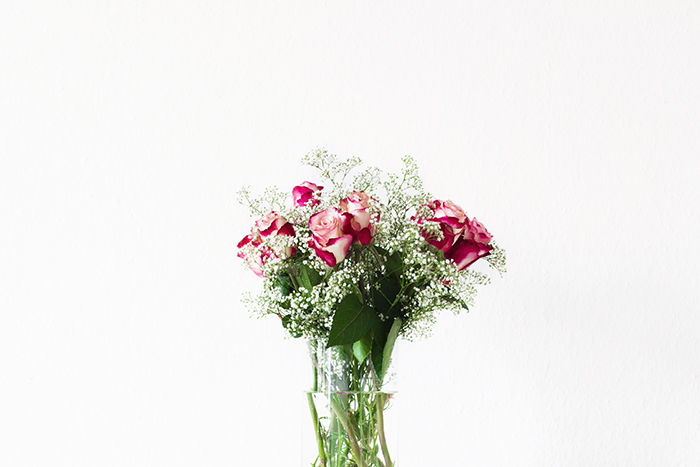
It’s imperative that your wedding flowers fuse with their surroundings and fit the style of your ceremony. To get the best possible result from your wedding photography and wedding videography, you must give your floral designer as much information as possible beforehand. Failure to provide the correct details could cause serious problems and make your venue look mismatched and botched together. When you’ve found a suitable floral designer, attend the meeting prepared with the following information:
1. Your Location – Will you be at a country club, with large glass windows overlooking a golf course? An arboretum, where there are existing gardens in place? A hotel ballroom that’s a blank slate, a cavernous room with a gorgeous chandelier that will need to be filled to overflowing with beautiful floral décor? Your home? Floral designers say that this is one of the most important questions they ask of brides and grooms who come in for consultations. They’ve worked in many of the most popular sites in the area, so they know what looks fabulous on your favourite restaurant’s outdoor terrace, that your choice of ballroom has a staircase that can be lined with garlands, or that the country club already has floral décor in their cocktail party room. If your wedding will take place at any establishment like a hotel, ballroom or restaurant, ask if your florist is familiar with it, and bring photos of the room that you’ve printed off of their Web site initially. The florist will want to visit the site with you in order to get a feel for the features, for alcoves and the shape of the room. There’s no replacement for actually being there. And that will apply as well if you’ll be having the wedding at home, whether indoors or outside under a tent. The floral designer can do his or her work more perfectly for you when you share an in-person tour of your planned wedding space.
2. The Season – Be sure you have your wedding date set before you meet with your floral designer, since the foundation of the floral design and carry pieces will depend so much on the season of your wedding. Certain flowers and greens are more plentiful and perhaps more affordable at certain times of the year, after all, and a good florist will create designs that fit with the time of year. For instance, bright yellow, summery daisies wouldn’t work for a winter wedding. Autumn weddings would feature a wide range of fall season flowers, leaves and other gorgeous elements to the floral pieces. The florist will be able to tell you which types of flowers can be imported for your wedding date, such as tropical flowers for a late-spring wedding. This piece of information will impact not just your style, but your wallet as well.
3. Your Style and Formality – Of course, your flowers will need to suit your style – Victorian, traditional, modern, art deco – as well as any theme you have in mind, and the florist will need to know your formality level to match the flower design appropriately. Roses are ideal for a formal wedding, while birds of paradise suit the tropical-themed wedding.
4. Your Colours – A coordinating and complementary palette can only be created with colour swatches, not vague descriptions.
5. Your Budget – Let your florist know your range, and he or she will describe what you can realistically expect from your budget. Thirty centrepieces on £200? Doubtful.
6. What Your Gown Looks Like – Bring or e-mail a photo of your gown’s design, so that the floral designer can create a bouquet size and shape that complements you in your dress. For instance, a dress with intricate beadwork on the bodice shouldn’t be hidden by a giant, cascading bouquet. That photo of your gown, and the fabric it’s made from, will further shape the floral designer’s expert opinion of your most ideal bouquet shapes and sizes. A look at the lace on your gown can also help your floral designer choose the perfect complementary filler. An authentic Victorian lace would look wonderful with Queen Anne’s lace, for instance.
7. Your Favourite Flowers – Share a list of your favourite flowers, including the flowers from your love story. If your groom gave you calla lilies the night you got engaged, it would be a wonderful tribute to that moment to bring callas into your wedding day bouquet or centrepieces.
8. Any Allergies You or Your Groom Have – If either of you have allergies, your floral designer knows which flowers give off less pollen, preventing you from being red-nosed and sniffly at the wedding.
9. A Description of Your Guest Tables – Traditional round tables? Long, rectangular family tables? Square tables? Let your florist know what you’ve chosen so that he or she can choose the perfect vase and floral design for the centrepieces. For instance, a long, rectangular family-style table invites long planters filled with flowers set along the table runners. A round table invites a small, round vase or an elevated candelabra with floral accents.
10. Your Plans For Your Flowers After the Wedding – If you plan to preserve your bouquet, your florist can choose the flowers that work best in that process. If you wish to plant your centrepieces at your home, a living reminder of your big day, then he or she might go with potted topiaries that have been studded with stephanotis blooms.

